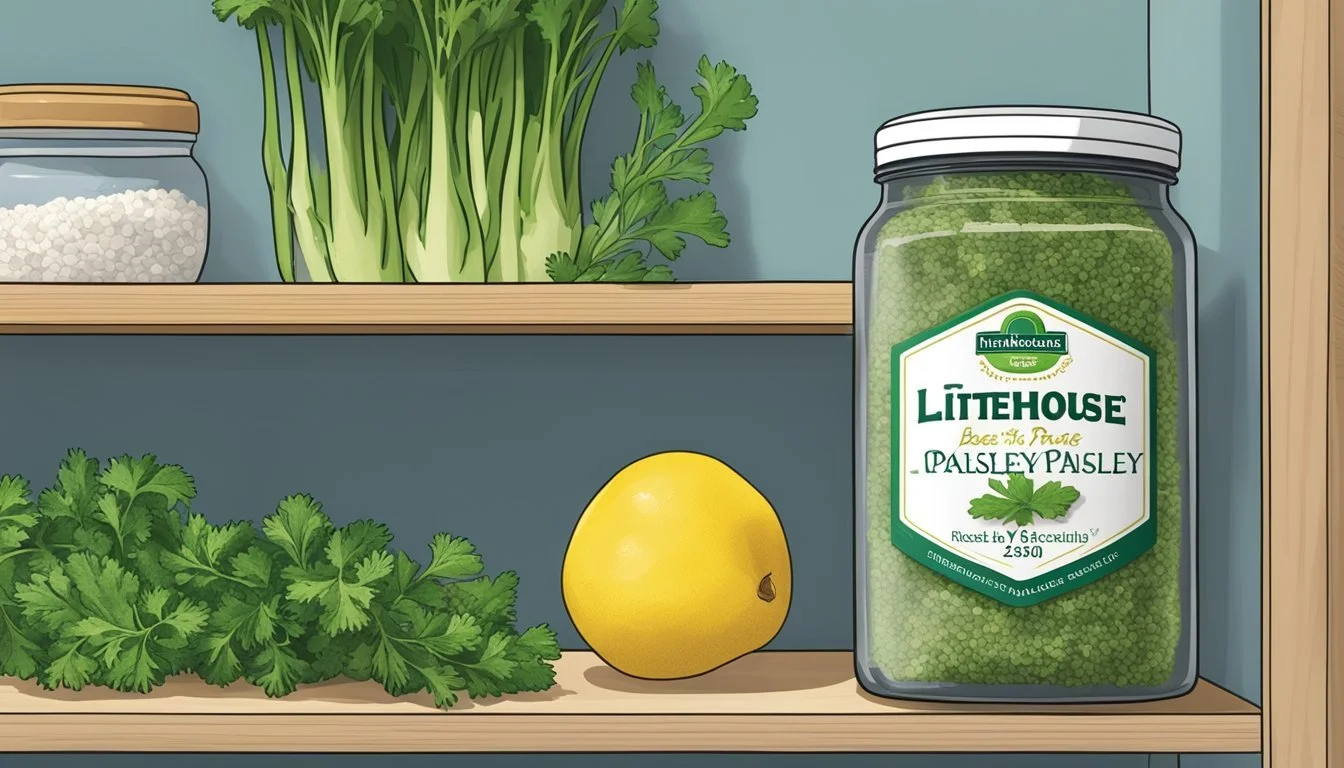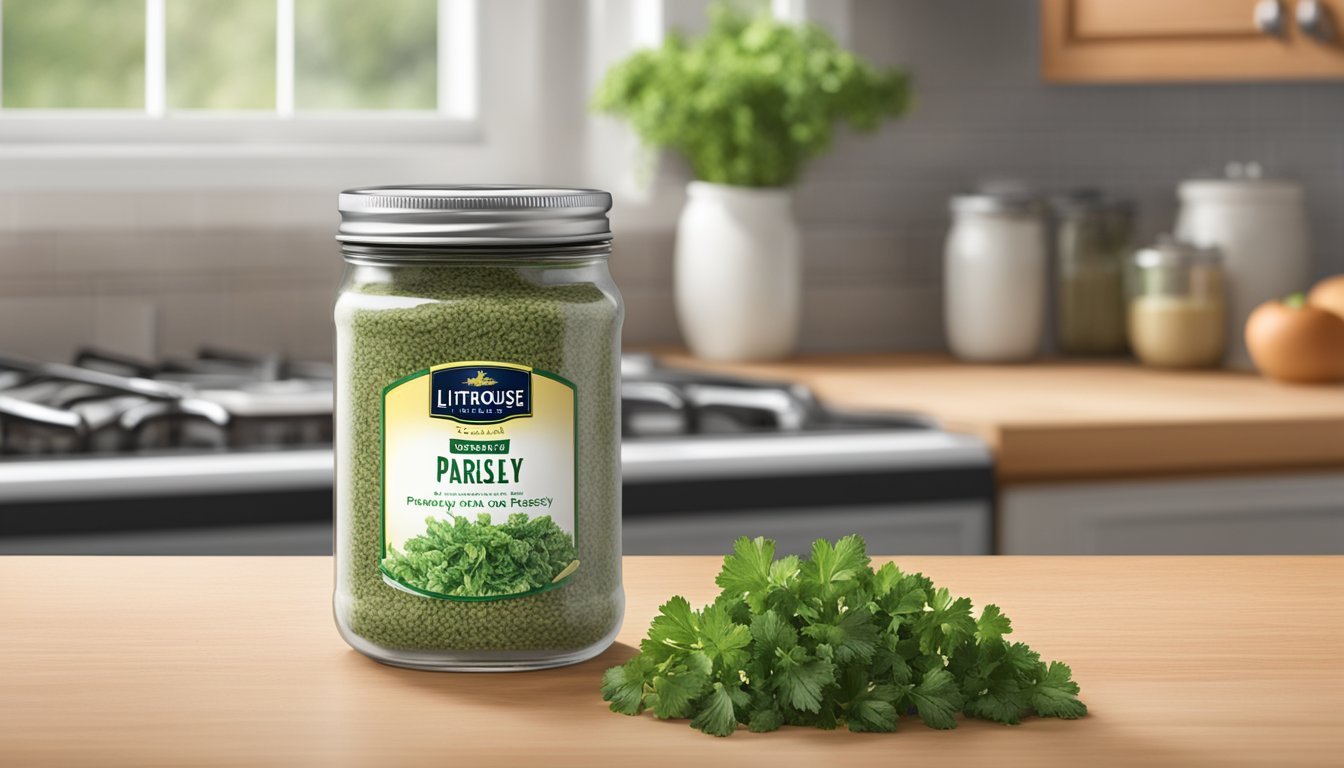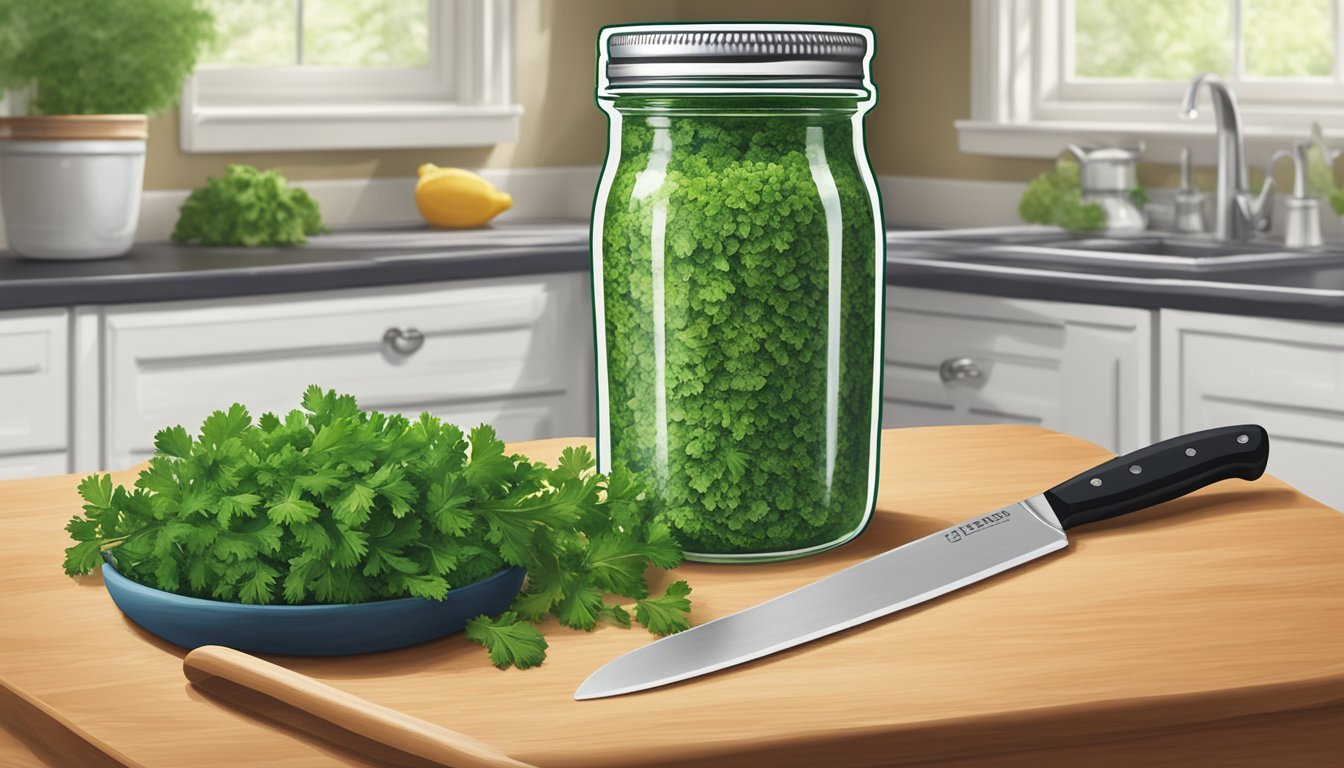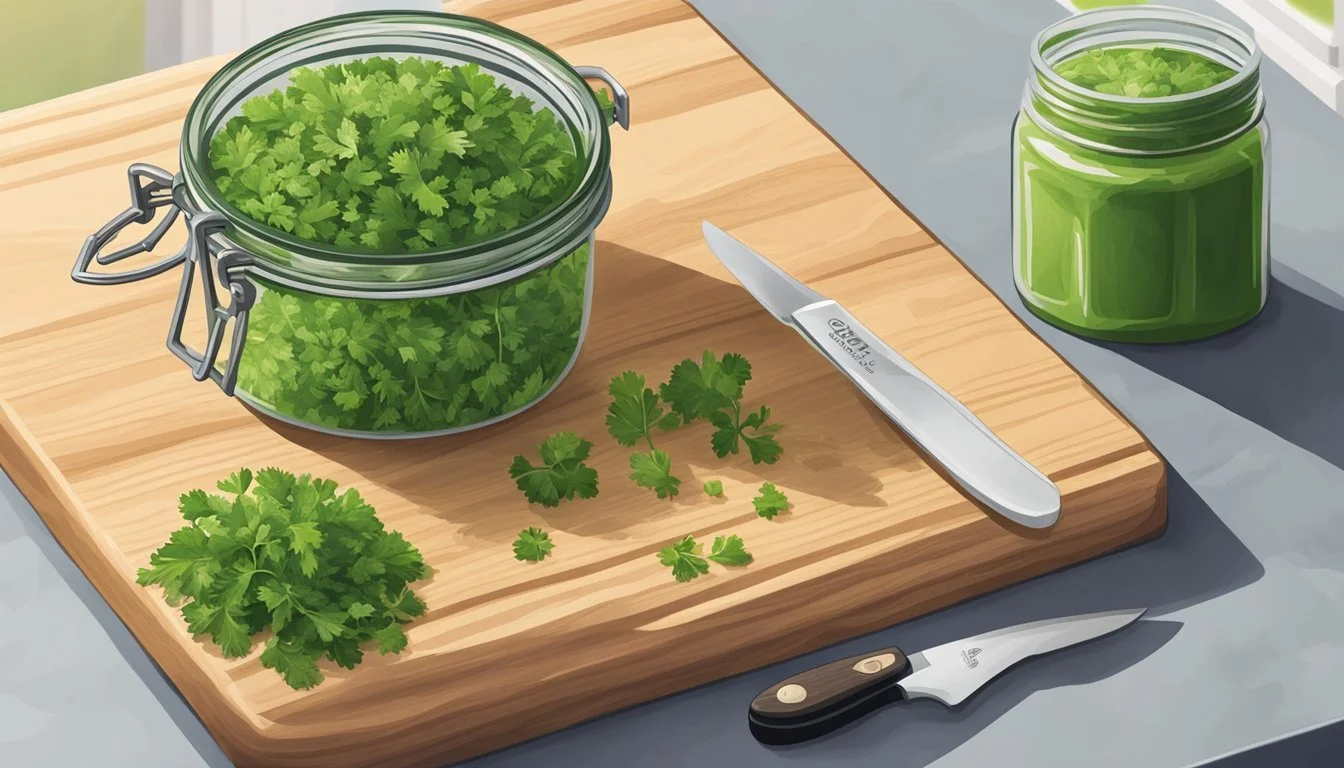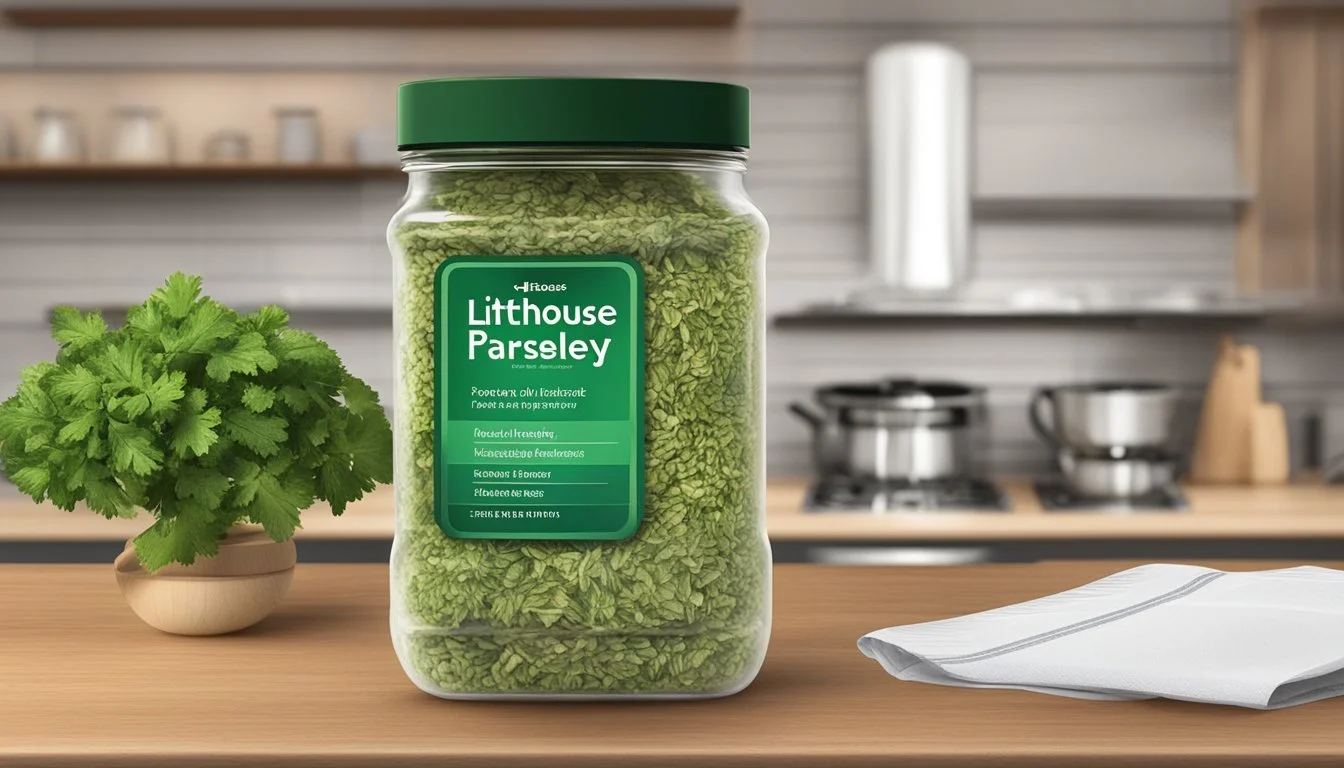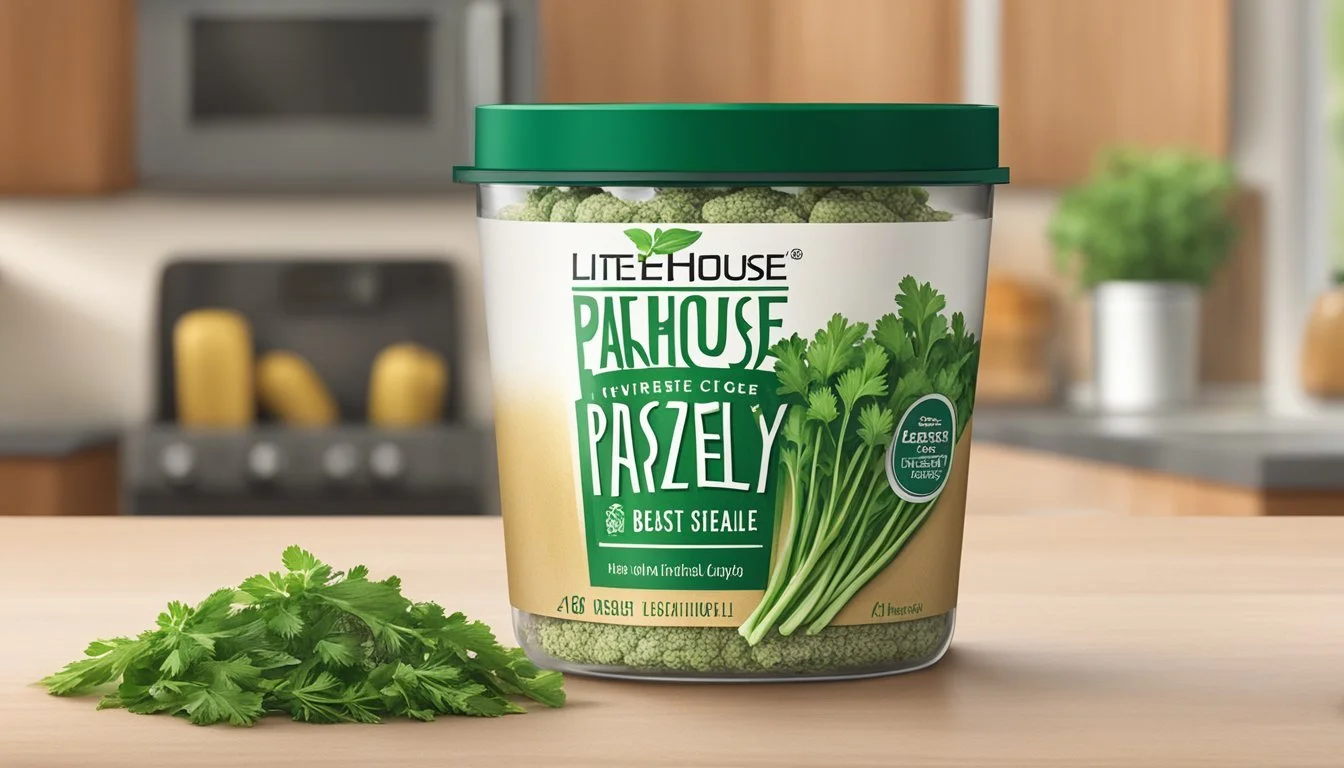How Long Does Litehouse Freeze-Dried Parsley Last?
Shelf Life Explained
Litehouse Foods offers a range of freeze-dried herbs, including parsley, which is a popular ingredient known for its versatility in cooking and garnishing. The shelf life of Litehouse freeze-dried parsley is a topic of interest for consumers who value both convenience and longevity in their culinary ingredients. Due to its freeze-drying process, Litehouse's parsley retains much of its flavor and nutritional value over time compared to fresh herbs (how long do fresh herbs last?).
To identify the expiration date of Litehouse freeze-dried parsley, consumers can look for a stamp on the neck of the bottle. This date indicates how long the product is expected to maintain its quality and flavor. Proper storage conditions play a critical role in extending the lifespan of dried herbs. When kept in a cool, dry place and sealed correctly after each use, freeze-dried parsley can last well beyond its indicated expiration date.
Understanding Freeze Dried Parsley
In exploring the longevity of Litehouse freeze-dried parsley, it's essential to comprehend what freeze drying entails, how it differs from using fresh herbs, and what makes the Litehouse brand distinct.
Definition of Freeze Drying
Freeze drying is a preservation method that removes moisture from a product, such as parsley, through sublimation. This process involves freezing the herb and then reducing the surrounding pressure to allow the frozen water in the herb to transition directly from a solid to a gas.
Difference Between Fresh and Freeze Dried Herbs
Fresh herbs, including parsley, are known for their vibrant color, fresh aroma, and full flavor. However, they have a short shelf life and typically last a week or two when stored properly. In contrast, freeze-dried herbs are shelf-stable thanks to the removal of moisture, which significantly extends their usability without requiring refrigeration. Litehouse freeze-dried parsley retains much of the original taste and aroma of the fresh herb and can be rehydrated quickly, offering a convenient alternative for culinary purposes.
The Litehouse Brand Overview
Litehouse, a company specializing in various food products, offers freeze-dried parsley that boasts a longer shelf life than fresh herbs. The brand emphasizes the versatile use of their freeze-dried parsley, which can be employed similarly to fresh parsley, encompassing garnishing, inclusion in dishes, and incorporation into seasoning blends. Their freeze-dried parsley is described as being equal to three bunches of fresh parsley, ensuring that flavor and convenience are packaged neatly into their jars.
Shelf Life and Storage
Litehouse freeze-dried parsley offers a convenient alternative to fresh herbs with a significant shelf life advantage. Proper storage is key to maintaining its quality.
Determining Shelf Life
The shelf life of Litehouse freeze-dried parsley is determined by the expiration date on the package. The date is typically stamped onto the neck of the bottle, also referred to as a retention leash. This date gives consumers a reliable indication of how long the product will retain optimal quality.
Optimal Storage Conditions
Litehouse freeze-dried parsley should be stored in a cool, dry place to maximize its shelf life. Factors such as moisture, heat, and light can accelerate degradation. To store dried parsley effectively:
Keep the bottle tightly sealed after each use to prevent moisture entrance.
Place in a cupboard away from heat sources like stoves or direct sunlight.
Signs of Spoilage
Although Litehouse freeze-dried parsley has a long shelf life, it can still spoil if improperly stored. Signs of spoilage include:
Changes in color, typically a loss of vibrancy.
An off-smell, deviating from its original aromatic quality.
Clumping, indicating moisture has entered the bottle.
It is essential to monitor the product for these signs and use it before the indicated expiration date to ensure the best quality.
Culinary Uses
Litehouse freeze-dried parsley is versatile in the kitchen, offering both convenience and flavor. It retains the aroma and taste of fresh parsley and can be used in multiple culinary situations.
Incorporation in Cooking
In cooking, chefs frequently incorporate Litehouse freeze-dried parsley during the cooking process to enhance the flavor of dishes. Whether one is making soups, stews, or sauces, it is easy to integrate. Chefs can simply stir in the desired amount directly into the pot, where the herb rehydrates and melds its flavor with the other ingredients.
As a Substitute for Fresh Parsley
When fresh parsley isn't available, Litehouse freeze-dried parsley serves as an excellent substitute. The general guideline suggests using one tablespoon of freeze-dried parsley in place of one tablespoon of fresh parsley. This one-to-one ratio helps maintain the intended taste profile of the dish without the need for adjustment.
Freeze Dried Parsley as a Garnish
As a finishing garnish, freeze-dried parsley can bring a pop of color and a hint of freshness to any dish. Chefs can sprinkle it atop entrees or sides right before serving, allowing it to slightly rehydrate for a fresh appearance and subtle aroma without overpowering the main flavors.
Nutritional and Flavor Profile
Litehouse Freeze Dried Parsley maintains a delicate balance between nutrition and flavor that is essential in a variety of culinary applications. It provides a convenient way to add a subtle flavor punch to dishes without sacrificing the nutritional benefits of fresh herbs.
Taste and Aroma
The flavor of Litehouse Freeze Dried Parsley is comparable to that of fresh parsley but with a milder intensity. It imparts a light, refreshing taste to soups, salad dressings, and eggs. As a garnish, it adds a touch of earthiness and color with its gentle grassy notes, enhancing the overall aroma of the dish without overpowering other ingredients.
Nutritional Benefits
While the flavor is a subdued version of its fresh equivalent, Litehouse Freeze Dried Parsley contains many of the same nutritional benefits. In its freeze-dried form, parsley still offers vitamins and minerals that are found in fresh parsley, including:
Vitamin A: Important for vision and immune function
Vitamin C: An antioxidant critical for skin health and immune defense
Iron: Essential for blood production and transport of oxygen
The nutritional content does not substantially diminish when parsley is freeze dried, thereby making it a good choice for incorporating into a healthy diet.
Advantages and Limitations
Litehouse freeze-dried parsley offers distinct advantages and a few limitations when considered for culinary and storage purposes (talking about entities such as convenience and packaging).
Convenience of Use
Litehouse freeze-dried parsley excels in convenience. The product comes in a container that is both easy to store and use, making it accessible for both seasoned cooks and novices. Each package typically equates to about three bunches of fresh parsley, ensuring that there is plenty of herb on hand without the need for frequent purchases.
Comparison with Fresh Parsley
When compared to fresh parsley, Litehouse freeze-dried parsley provides a longer shelf life, which reduces food waste. However, some subtle differences in taste and texture might be observed, since freeze-dried herbs can lose a bit of their fresh flavor and vibrant color. Despite this, they rehydrate quickly and incorporate well into dishes, offering a convenient alternative when fresh herbs are not available.
Buying and Storing Tips
When purchasing freeze-dried parsley and ensuring its longevity, buyers should focus on the quality of the product and the integrity of the packaging.
Selecting Quality Freeze Dried Parsley
Buyers should look for freeze-dried parsley that retains a vibrant green color, indicating minimal oxidation and proper drying. Quality parsley is often sold in mylar bags or sturdy containers to protect against moisture and light. One can typically find high-quality freeze-dried parsley at well-stocked grocery stores or specialty retailers.
Packaging and Container Insights
Packaging: Freeze-dried parsley should come in air-tight packaging—ideally a mylar bag with an oxygen absorber or a sealable container. This prevents moisture from rehydrating the herbs prematurely.
Containers: Glass mason jars with a tight-fitting lid are an excellent choice for long-term storage after opening the original packaging. They not only seal well but also block light, which can degrade the quality of the parsley over time. When transferring to a container, ensure it's absolutely dry to avoid clumping of the parsley. If using the original bottle, buyers should check that the lid closes securely to maintain freshness.
Safety and Dietary Considerations
When considering the safety and dietary aspects of Litehouse freeze-dried parsley, one should examine both the preservative content and allergen information to ensure it aligns with their dietary needs and preferences.
Preservative Content
Litehouse freeze-dried parsley is typically preservative-free, making it a suitable option for those looking to avoid artificial additives in their diet. The absence of preservatives is often a selling point for those seeking a more natural product. Additionally, the product is non-GMO, ensuring consumers are not exposed to genetically modified organisms which some prefer to avoid for health or ethical reasons.
Allergen Information
Concerning allergens, Litehouse has marked its freeze-dried parsley as gluten-free. This identification implies that the product does not contain wheat, barley, rye, or crossbreeds of these grains, making it suitable for individuals with celiac disease or gluten intolerance. Consumers are encouraged to check the label for any allergen certifications or warnings to ensure the product meets their dietary requirements.
Common Questions
In examining the longevity and quality preservation of Litehouse freeze-dried parsley, consumers often seek clarity. It's essential to understand not only the expiration timeline but also how to maintain the quality after opening the container.
Expiration and Usage
The expiration date of Litehouse freeze-dried parsley is a critical detail for consumers seeking to maximize the herb's shelf life. Litehouse typically stamps the expiration date on the neck of the jar or retention leash. Typically, one may substitute one tablespoon of freeze-dried parsley for an equivalent amount of fresh herb. To ensure accuracy, consumers are encouraged to periodically check the date and conduct a quality test—such as checking for color and aroma—before use, especially if the jar has been opened for an extended period.
Maintaining Quality After Opening
Once a jar of Litehouse freeze-dried parsley is opened, maintaining its quality becomes a priority. Here are key points to consider:
Moisture Control: Keep the product dry to prevent clumping or spoilage. Re-seal tightly after use.
Storage: Store in a cool, dry place away from direct sunlight.
By adhering to these simple but effective practices, one can ensure that the freeze-dried parsley retains its intended flavor and texture over time.

